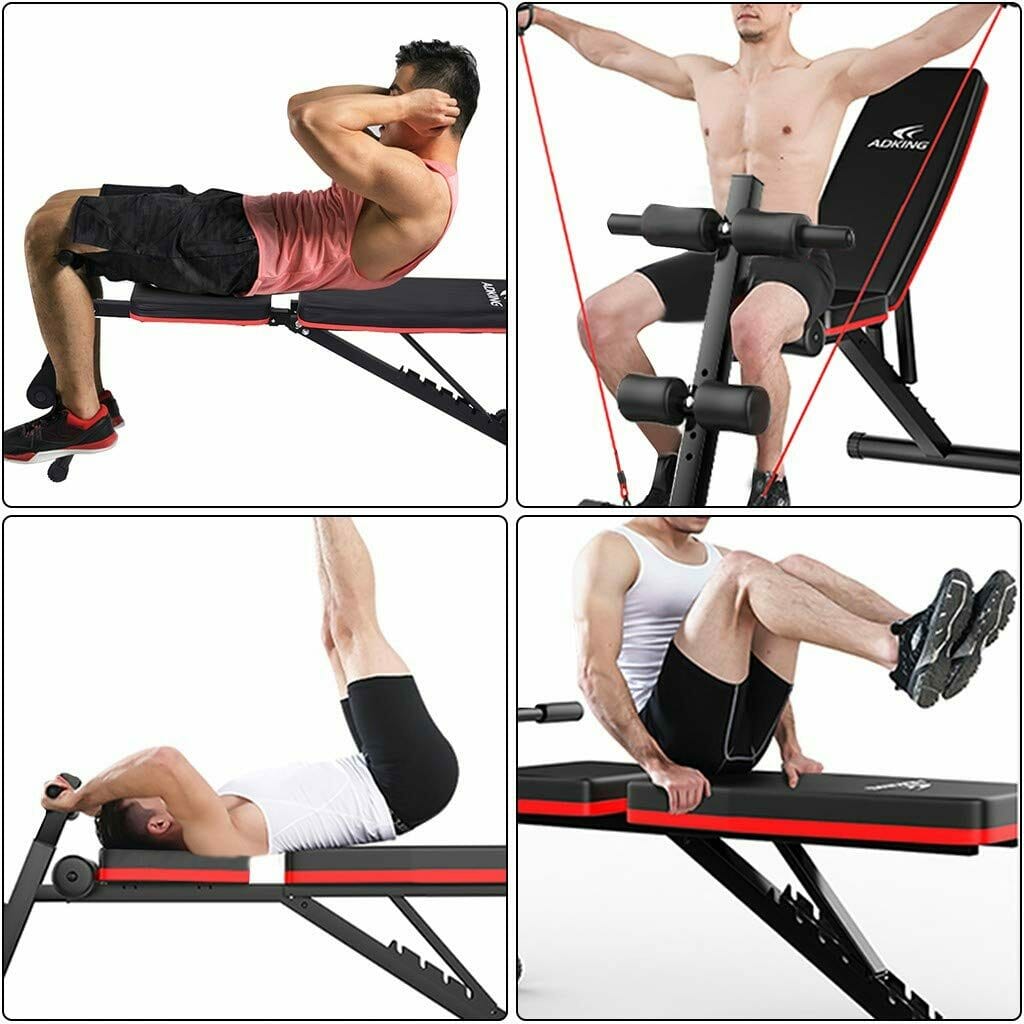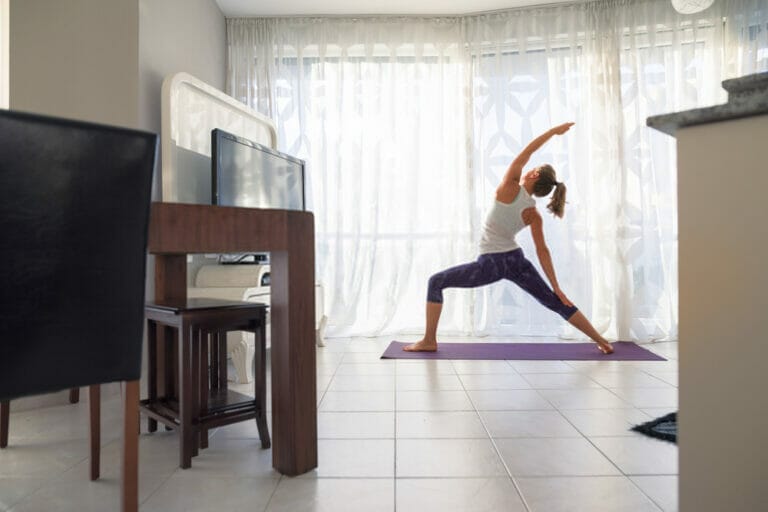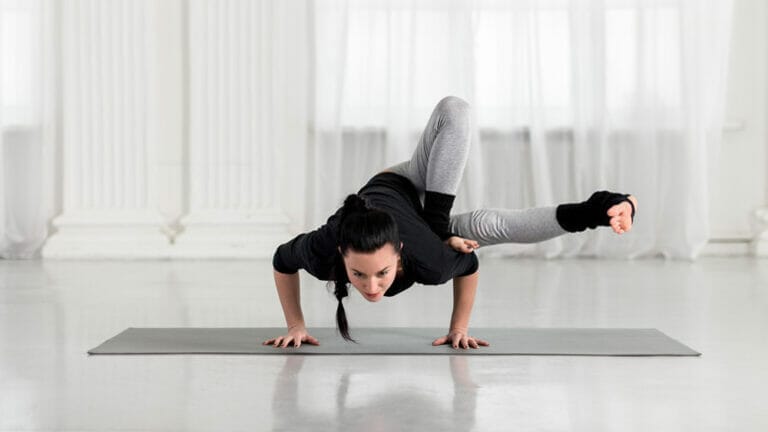Yoga Ring Exercises
Yoga can benefit people of all ages, depending on the poses they choose to practice. It’s not just about stretching and flexibility;
Yoga is a physical and emotional journey. It is why the poses are so important, as they must teach mindfulness and enable us to forget our problems for a while.
A great way of practising Yoga without any equipment is with Yoga Rings. These simple props offer many benefits, including increasing strength in wrists, arms, shoulders, abdominals, and hips.
At the same time, Yoga Rings help prevent injuries and strengthen the body. In addition to this, mastering the right Yoga Ring Exercises will improve balance and correct posture.
This article looks at what Yoga Rings are, how to use them, and eight exercises that will help you be more balanced. Let’s get started…
What are Yoga Rings?
Yoga Rings are a unique type of hand and arm-exerciser. They allow you to move your hands and arms without weights or other equipment. You can do Yoga without using any weights if you go for enough Hatha yoga poses.

Yoga Rings help increase flexibility in your hands and arms, though it is important to note that not all poses will benefit from having a band around your wrists. It is better to practice poses without the bands first before adding them in.
How to Use Yoga Rings
There are several ways to use Yoga Rings. The best way is to start by taking them out of the box and feeling their texture.
Do they feel smooth or rough? Are they thin or thick? You should also take the time to read any accompanying instructions with these bands.
Some come with a complete set of instructions, while a small user manual only accompanies some.
You can also experiment with different exercises to see which ones work best for you. When using Yoga Rings, you will be able to do arm circles and rotations, full-body stretches and twists in both the front and back.
Additionally, bringing your knees towards your chest will stimulate your abdominal muscles. The power behind Yoga Rings comes from how long you hold the poses for.
There are many exercises you can do with Yoga Rings; a few of them include:
Low Diagonal Ring
The Low Diagonal Ring is ideal for stretching and making your joints more flexible. In addition, this is great for improving overall posture, as it will help you strengthen the muscles in your back.
Procedure:
Begin by sliding your shoulder blades down your back while holding the Yoga ring at chest height with your palms flat against the grips and facing each other. Next, hold your head up, chin parallel to the floor, and look out in front of you.
- Maintaining a straight arm, lower your arms below shoulder height on a diagonal.
- Control the release by pulsing the ring 8–10 times.
- Make use of your chest muscles while keeping your chest open.
- Engage all of your arm muscles to sculpt and tone them.
- Make sure you’re breathing normally.
Middle Ring
Like the Low Diagonal, the Middle Ring is great for strengthening your core. It is mainly because it will help to strengthen and tone your abdominals and lower back muscles.
Procedure:
Return the ring to shoulder height for the middle ring exercise, keeping your arms straight and shoulders relaxed down.
- Using your palms, squeeze the circle.
- Pulse 8–10 times, then let go.
- Maintain an erect stance and continue to use your chest muscles.
- Activate all of your arm muscles.
- Continue to breathe normally.
High Diagonal Ring
The High Diagonal Ring is excellent for increasing flexibility and muscle tone. In addition, doing this will allow you to do more advanced poses such as the Plank and Headstand, giving you a significant advantage over the vast majority of Yoga enthusiasts who can’t manage these poses without a band.
Procedure:
Raise the ring to a high diagonal while maintaining your shoulders down and your shoulder blades sliding down your back.
The Pilates ring should be visible in your peripheral vision, and your biceps should be in front of your face rather than behind your ears.
- Pulse the ring.
- This exercise should cause you to feel a muscular contraction in your chest muscles.
- Recheck your posture. Do you still have your shoulders hunched? Have your shoulder blades shifted to the back of your neck?
- Before moving on to the next exercise, return the ring to the middle position and take a few deep breaths.
Halo Ring
The Halo Ring is the same as the Low Diagonal; it places your arms in a higher position. It makes it an excellent exercise for strengthening and toning your back, shoulders, and arms muscles.
Procedure:
For the halo ring exercise, keep your shoulders relaxed as you bring the ring aloft again, this time so that it is flush against the ceiling.
- Bend your elbows out to the side so that the ring forms a halo around your head.
- Feel your back and chest opening up.
- 8–10 times, squeeze and release the ring. Inhale during the squeeze and exhale during the release.
Chest press with a squat

The Chest Press with Squat is a great way to improve your ab and upper back work. It is also perfect for improving your balance and overall core stability, as well as strengthening your chest, arms, shoulders and abdominals.
Procedure:
- Stand with your legs apart.
- The first part of this exercise is a deep squat with a chest press at the same time.
- Lift the ring to shoulder height, keeping your shoulders relaxed.
- Squeeze the ring to pulse 8–10 times, then let go.
- Holding the ring at shoulder level, press the palms together and move them above your head in a circular motion.
Side-lying leg lift
The Side-lying leg lift is an exercise that improves your lower back flexibility and stimulates your abdominal muscles.
Procedure:
- Lie on the mat sideways and put the ring in between the legs.
- Bring your knees in and lift the ring up and towards your chest.
- Hold for a few seconds, then return to the starting position slowly.
Arm circles
Arm circles are a perfect example of how Yoga Rings can be used to help tone and strengthen muscles that you don’t usually use in your regular yoga routine.
Arm Circles are also great for improving overall posture as they will improve the flexibility of your shoulders and upper body.
Procedure:
Place the ring on your hands, facing and touching your thumbs in the centre of your palms.
Turn the ring to rest with one side on each thumb. Wrap the palm around the comfortable grips.
We recommend that you wrap it for comfort and a proper fit, ensuring you have a full range of motion. You can easily adjust the pressure you wish to work out by changing how close or far apart you keep your hands.
Supine arm series
The Supine Arm Series is a great way to tone and strengthen your arms, shoulders and chest.
Procedure:
- Adjust your position so that the ring is directly beneath the armpit of your right arm. Next, place your left arm across your chest and relax both shoulders.
- This exercise extends the scapula, which happens to be one of the muscles that Yoga Rings are particularly good at targeting. If you are not quite familiar with a scapula, it’s the shoulder blade.
- To start the exercise, lift your right arm as high as you can and then pull it downwards to the side of your chest. You should feel a good contraction in your right arm and chest muscles.
- Depending on how advanced you are with Yoga Rings exercises, you can extend one arm or two arms.
Supine leg lift

The Supine Leg Lift with Single Hand Support is a great exercise perfect for toning and strengthening your lower back muscles. It is also an excellent exercise for improving the strength of your shoulders and wrists.
Procedure:
- Use the placement on the ring to rest the centre of your hand on one side of your shoulder, then raise the ring and pull it towards your chest. You should feel a good contraction in all muscles in your lower back.
- Lower the ring to the starting position using a single hand and lift it upwards.
- From here, you will perform an upward rotation that would be typical of a one-arm handstand.
- Yoga rings have been used in physical rehabilitation therapy as an exercise aid and therapy tool. Yoga rings are straightforward and can be used in almost any rehabilitation program.
For example, it can treat injuries to the neck.
It can also treat minor back injuries such as a strain or sprain by applying gentle pressure to the area.
The elasticity of the ring allows it to conform easily around any size and shape of injury.
In the case of an acute back problem, simple movements can tone the muscle and increase circulation in the area.
If a patient has had surgery, Yoga Rings can ensure that the muscle works correctly before regular daily routines.
Yoga rings allow patients who cannot return to activities at home or work immediately after their surgery. As a result, patients can have more freedom of movement after surgery and complete their recovery more quickly.
Yoga Rings are also used as physical therapy tools for patients who suffer from neurological diseases such as Multiple Sclerosis, Cerebral Palsy, Parkinson’s Disease and ALS.
These diseases can cause weakness in the muscles of the arms and legs. The elasticity of the ring allows it to help get the patient accustomed to moving their muscles again.
Conclusion:
Yoga is a great way to stay fit, even if you only do it for 10 minutes a day. The benefits of Yoga are many and varied, but the most noticeable is an increase in strength and flexibility while reducing stress.
The variety of types of Yoga that exist ensure that everyone has a style they can relate to. The Yoga ring is making it possible for more people to enjoy the benefits of Yoga by performing the exercises with greater ease than before.
So, take the Yoga ring out of your gym bag, attach it to your doorknob, and get started on a healthier lifestyle!






